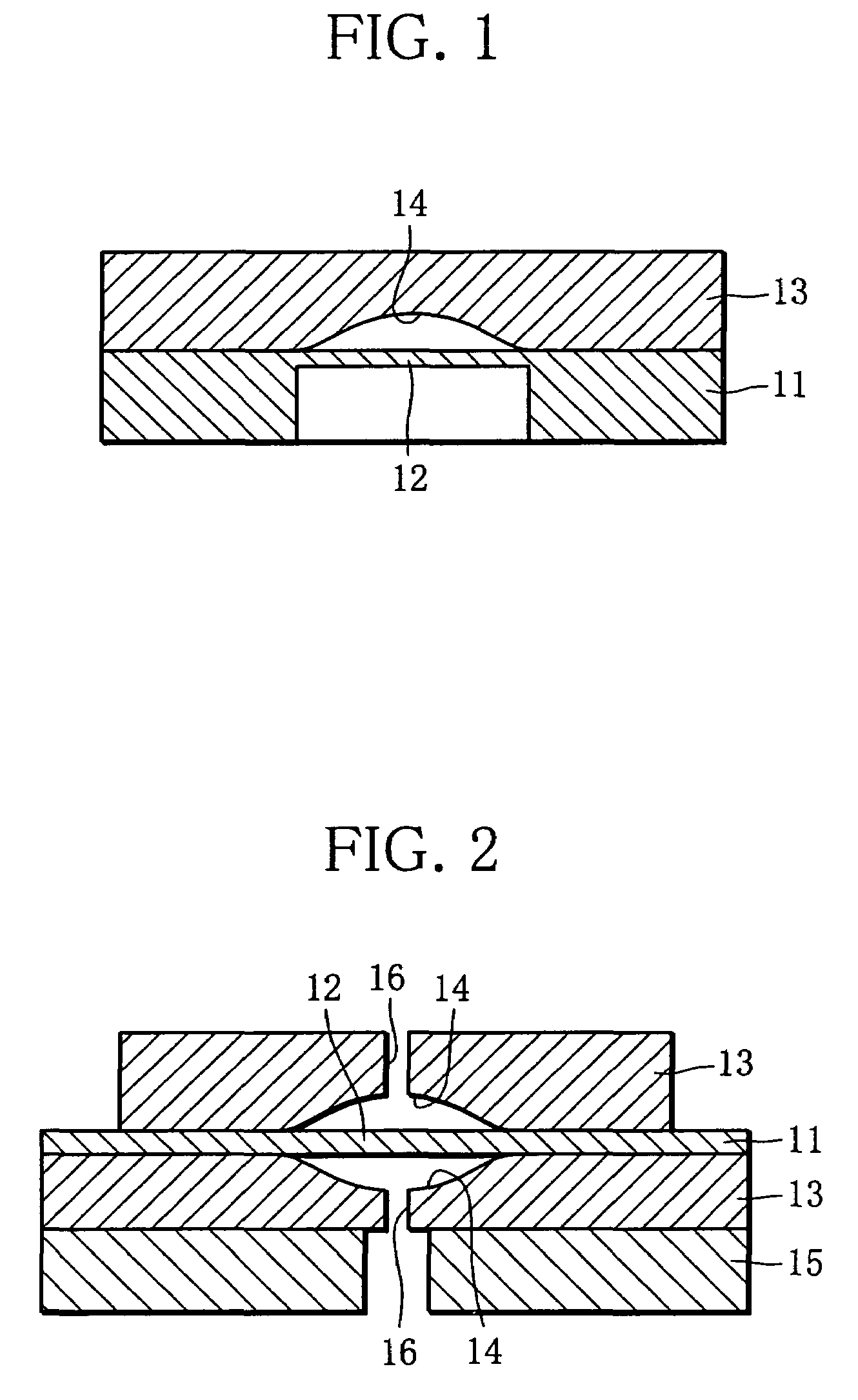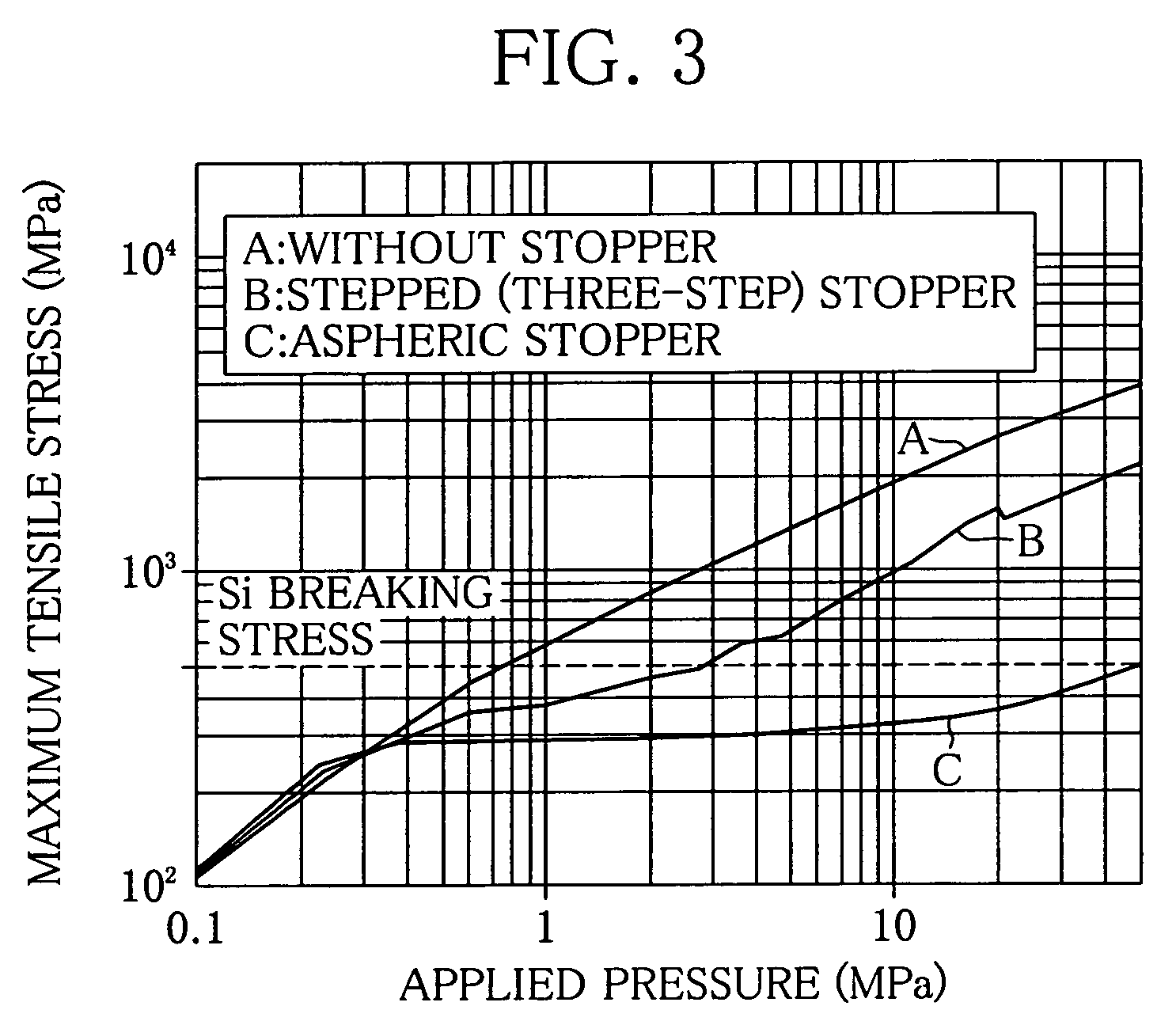Pressure sensor device including a diaphragm and a stopper member having a curved surface facing the diaphragm
a technology of pressure sensor and diaphragm, which is applied in the direction of pressure difference measurement between multiple valves, variable capacitors, instruments, etc., can solve the problems of b>2/b>, and achieve the effect of preventing a diaphragm breakdown, simple structure and increasing withstand pressur
- Summary
- Abstract
- Description
- Claims
- Application Information
AI Technical Summary
Benefits of technology
Problems solved by technology
Method used
Image
Examples
Embodiment Construction
[0034]A pressure sensor device according to an embodiment of the present invention will be described below with reference to the drawings.
[0035]FIG. 1 is a sectional view of a substantial part, showing a basic structure of a pressure sensor device according to the present invention. Reference numeral 11 represents a base body in which a thin diaphragm 12 with a prescribed diameter is formed. The base body 11 is made of brittle material such as silicon (Si) and glass. Reference numeral 13 denotes a stopper member that includes a concave portion 14 facing the diaphragm 12 and is integrally joined to the base body 11. The concave portion 14 is formed as a curved surface parallel to a surface (displacement surface) formed by displacement of the diaphragm 12.
[0036]The curved surface of the concave portion 14 is a curved surface in which when the diaphragm 12 has a radius of r, a thickness of t, and a flexural rigidity of D, depth y at a distance x from the center of the diaphragm 12 in r...
PUM
| Property | Measurement | Unit |
|---|---|---|
| thickness | aaaaa | aaaaa |
| thickness | aaaaa | aaaaa |
| stress concentration | aaaaa | aaaaa |
Abstract
Description
Claims
Application Information
 Login to View More
Login to View More - R&D
- Intellectual Property
- Life Sciences
- Materials
- Tech Scout
- Unparalleled Data Quality
- Higher Quality Content
- 60% Fewer Hallucinations
Browse by: Latest US Patents, China's latest patents, Technical Efficacy Thesaurus, Application Domain, Technology Topic, Popular Technical Reports.
© 2025 PatSnap. All rights reserved.Legal|Privacy policy|Modern Slavery Act Transparency Statement|Sitemap|About US| Contact US: help@patsnap.com



